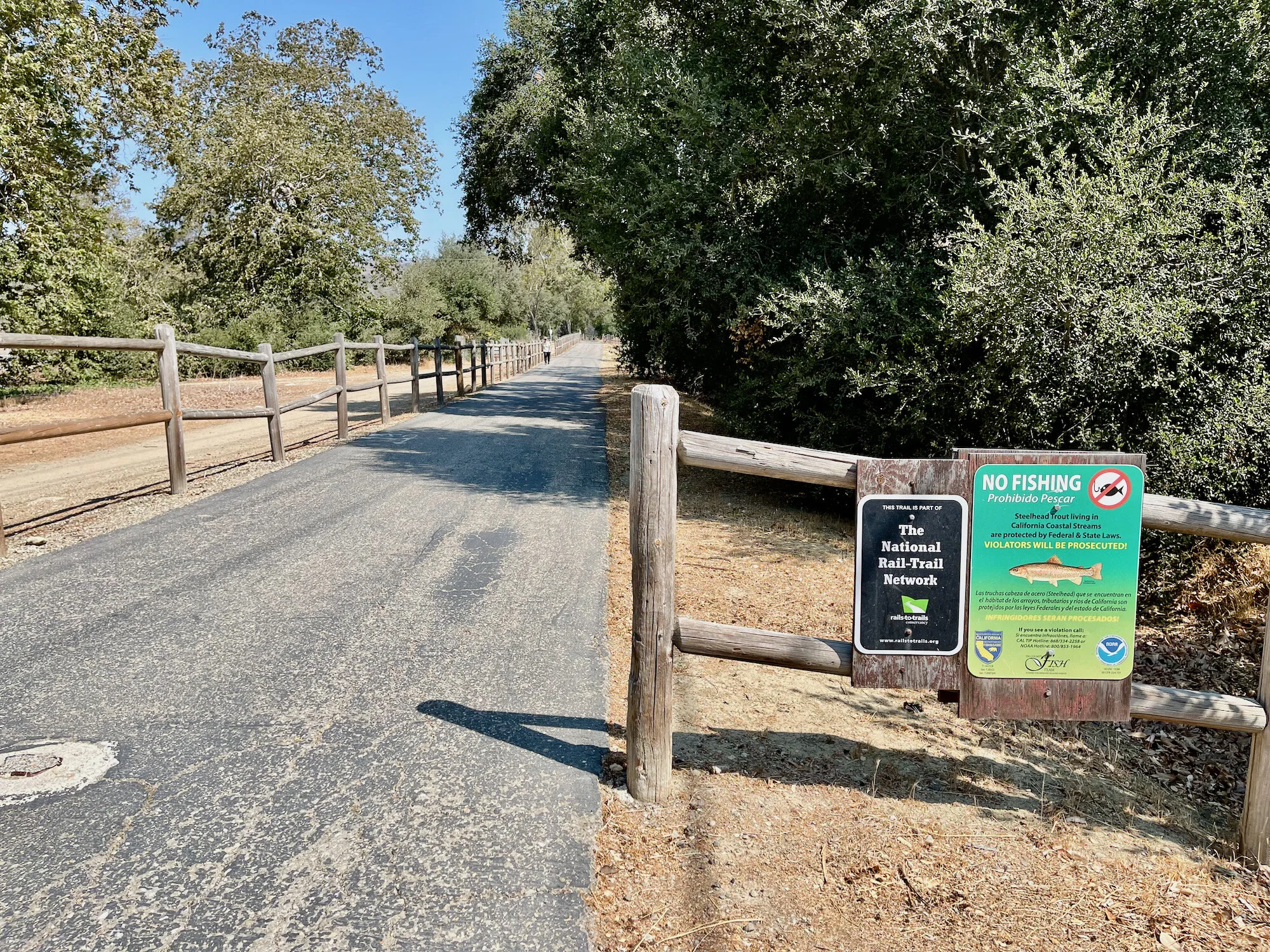Railbanking
Railbanking is a Federal process that protects and preserves rail corridors. Below are links that provide information on railbanking.
Information from the SCCRTC
(Santa Cruz County Regional Transportation Commission)
Informational Report on the Potential Preservation of the Santa Cruz Branch Rail Line
2022 SCCRTC staff report outlines legal, financial, and logistical factors surrounding railbanking and the termination of freight rights on the Santa Cruz Branch Line. Essential reading for understanding the full scope of options available to the RTC.
Preservation of the Santa Cruz Branch Rail Line
2021 SCCRTC report evaluates preservation alternatives for the corridor — including freight service, public-private partnerships, and railbanking. Serves as background for later recommendations.
Railbanking on the Santa Cruz Branch Rail Line and FAQ
A clear and concise FAQ from SCCRTC staff explaining what railbanking is, how it works legally, and how it could be applied to the Santa Cruz Branch Line.
Railbanking Basics
Rails to Trails Conservancy
A detailed explanation from the national organization that knows more about railbanking than any other. Offers legal insights, national precedents, and examples of how trails have been built on railbanked corridors.
Wikipedia
An accessible overview of the railbanking process, with historical context, examples, and links to federal policy.
What is Railbanking?
Greenway’s introductory guide to railbanking for Santa Cruz County residents. Good for newcomers who want a plain-language explanation of what it means and why it matters locally.
Can Rail Return After Railbanking?
This Greenway article busts the myth that railbanking permanently eliminates rail use.
The Law
The law often referred to as the Railbanking Act or Rails-To-Trail Act, is part of the National Trails System Act of 1968. It was added as 16 U.S.C. 1247(d) in 1983:
(d) Interim use of railroad rights-of-way
The Secretary of Transportation, the Chairman of the Surface Transportation Board, and the Secretary of the Interior, in administering the Railroad Revitalization and Regulatory Reform Act of 1976 (45 U.S.C. 801 et seq.) and chapter 224 of title 49, shall encourage State and local agencies and private interests to establish appropriate trails using the provisions of such programs. Consistent with the purposes of that Act, and in furtherance of the national policy to preserve established railroad rights-of-way for future reactivation of rail service, to protect rail transportation corridors, and to encourage energy efficient transportation use, in the case of interim use of any established railroad rights-of-way pursuant to donation, transfer, lease, sale, or otherwise in a manner consistent with this chapter, if such interim use is subject to restoration or reconstruction for railroad purposes, such interim use shall not be treated, for purposes of any law or rule of law, as an abandonment of the use of such rights-of-way for railroad purposes. If a State, political subdivision, or qualified private organization is prepared to assume full responsibility for management of such rights-of-way and for any legal liability arising out of such transfer or use, and for the payment of any and all taxes that may be levied or assessed against such rights-of-way, then the Board shall impose such terms and conditions as a requirement of any transfer or conveyance for interim use in a manner consistent with this chapter, and shall not permit abandonment or discontinuance inconsistent or disruptive of such use.

